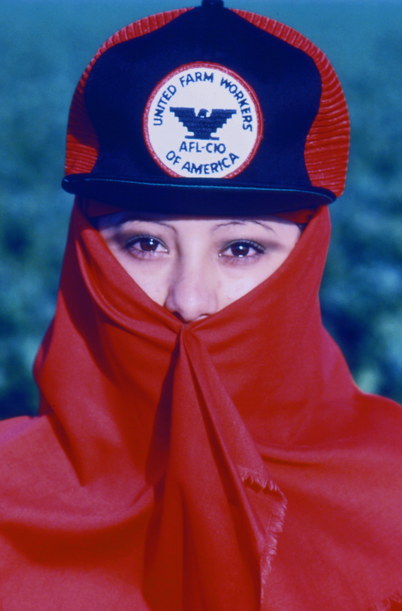
Organizing Farmworkers
Richard Street | California, United States
Organization: Streetshots
Photographer: Richard Street
Organization: Streetshots
Exhibit Title: Organizing Farmworkers
Location: California, United States
César Chávez accomplished the impossible. He formed a union of agricultural workers, the United Farm Workers union (UFW). Organizing an international boycott of table grapes, he sustained his effort over five years with long fasts, huge marches, determined, almost fanatical organizers, and extensive alliances with urban supporters and civil rights groups. Chávez won contracts with the entire California table grape industry and seemed on the way to unionizing all of California’s farmworkers, and from there towards building a nation-wide union. Since 1973, the UFW has steadily declined. Weakened by internal union problems, thwarted by the systematic gutting of the Californa State Agricultural Labor Relations Board, and losing valuable leaders, and undermined by a continual influx of desperate, undocumented immigrant workers, Chávez saw union membership drop from over 100,000 in 1979 to around 15,000 today.
Richard Steven Street, Beasts of the Field: A Narrative History of California Farmworkers, 1769-1913 (Stanford Univresity Press, 2004).
Richard Steven Street, Photographing Farmworkers in California (Stanford University Press, 2004).
Richard Steven Street, Everyone Had Cameras: Photography and Farmworkers, 1850-2000 (University of Minnesota Press, 2008).
Richard Steven Street, Jon Lewis: Photographs of the California Grape Strike (University of Nebraska Press, 2013)
Susan Ferriss and Ricardo Sandoval, The Fight in the Fields: Cesar Chavez and the Farmnworkers Movement (Harcourt Brace and Co., 1997).
Miriam Pawel, The Union of their Dreams: Power, Hope, and the Struggle in Cesar Chavez's Farm Worker Movement ( Bloomsbury Press, 2009)
I first photographed UFW leader César Chávez on August 4, 1979, when over 10,000 farmworkers and supporters converged on Salinas, California during the lettuce strike and boycott. Five days later I photographed Chávez beneath a giant poster of murdered farm worker activist Rufino Contraras, who had been shot in January while confronting replacement workers in an Imperial Valley lettuce field. César seems to be pointing to Rufino’s portrait in such a way to remind us that over a century more than two dozen farm workers have been murdered in farm labor disputes; no one has ever served more than a token jail sentence for any of those murders. My work is part of a larger, multi-volume, 30-year project amalgamating scholarship, documentary photography, and investigative reporting. My images aim at extending the visual record past the iconic black and white images from the Delano grape strike and boycott of 1965 -1973 into the uncertain and deceptively colorful present.
Make Comment/View Comments